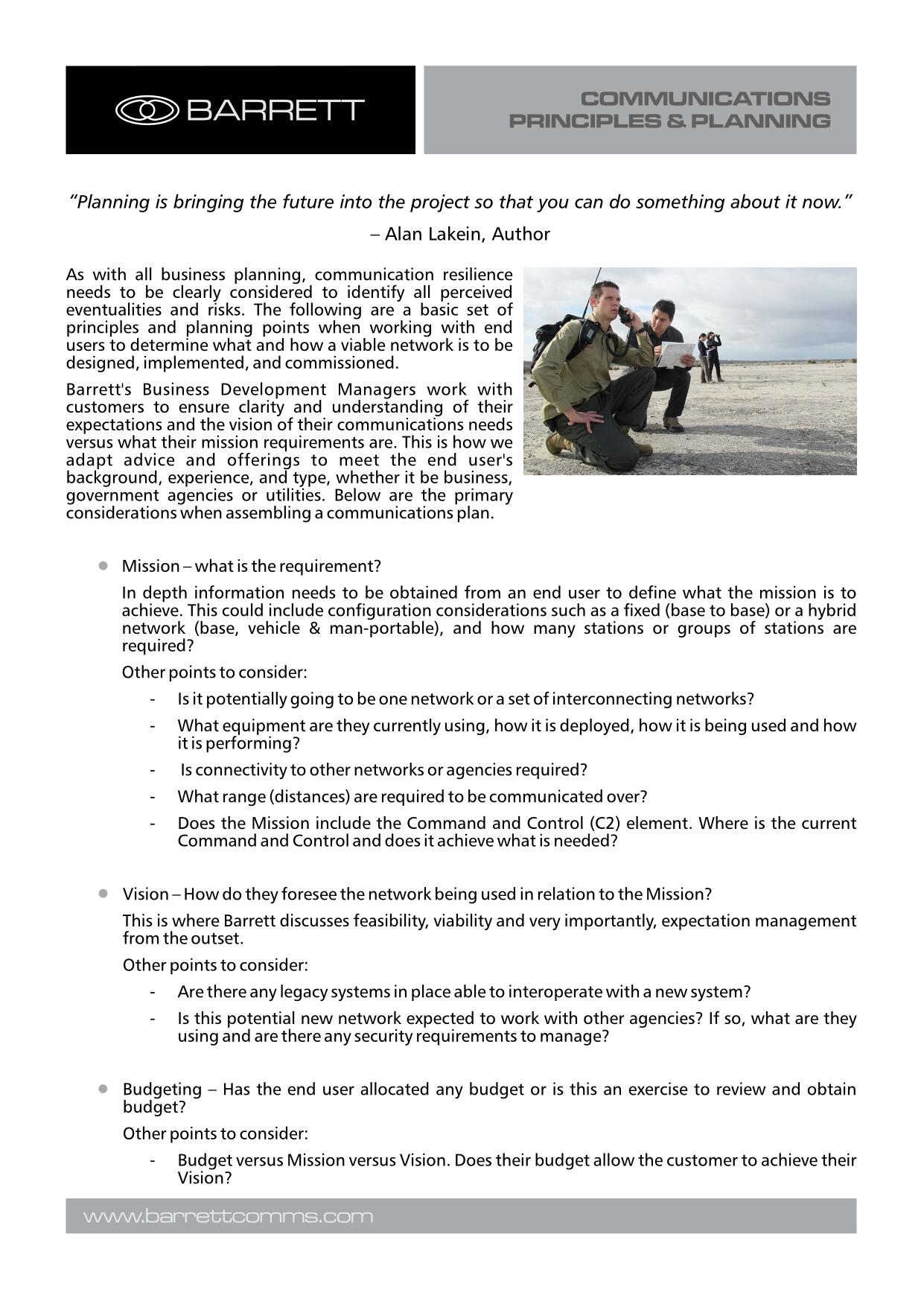
For all the claims that “an army marches on its stomach”, in the 21st century it is not just the ability to supply food that matters most, but the ability to communicate.
Tactical communications are firmly at the centre of military thinking, and members of military and law enforcement agencies around the world need the ability to communicate in remote areas where no traditional infrastructure exists.
Out in the field, self-sufficient communications and the ability to transmit voice, email, and data are imperative. This is where high frequency (HF) radio comes into its own.
HF overcomes the challenges of operating in such difficult locations, providing the capability for full voice and data signal transmission without relying on any supporting infrastructure.
HF radio is a medium of communication that operates in the radio spectrum between 1.6 and 30 megahertz (MHz), and provides effective communications over short and long distances.
There are two main forms of radio wave transmission in HF radio: ground wave and sky wave. Ground waves travel along the earth’s surface, enabling communication across short distances, while sky waves are refracted in the earth’s ionosphere, providing transmission ranges well excess of 1,000kms.
The typical HF setup consists of a transceiver with a microphone, speaker, an independent power source and antenna for transmitting and receiving.
The industry standard setters
One company that has been at the heart of the HF radio industry for over a generation is Australian business Barrett Communications. Barrett has several innovation firsts under its belt, including making the first commercially available HF transceiver and handset to use touchscreen technology.
One of its most recent launches for tactical market is the PRC-4090 and, for a small piece of kit, it could have a big impact. Weighing just 2.95kg, the PRC-4090 is now the lightest military-grade HF transceiver available, while still boasting a staggering number of operator features.
“The PRC-4090 is one of the most advanced fully software-defined radio (SDR) transceiver and remains true to the Barrett ethos of designing transceivers that provide intuitive ease of use,” says Andrew Burt, CEO, Barrett Communications.
“The software updates available to the Barrett’s PRC-4090 range allows for ‘future proof’ release of options and new features not previously available to older model transceivers.”
A brighter future
With its 24-bit colour touchscreen displays and an icon-based interface, the PRC-4090 range is closer in user experience to a modern smartphone than other HF transceivers. This brings huge advantages in terms of ease of use with reduced training burdens.
The PRC-4090 range comes packed with the latest radio technology, including digital voice which eliminates the background noise and static traditionally associated with HF radio communications.
Along with Digital Voice, AES 256 and DES 56 encryption brings a higher level of security than previously experienced. Much like the new icon-based interface, the improved sound quality makes the PRC-4090 a lot more similar to the call quality and usage of mobile phones.
Multi-configured system and operator features
The PRC-4090 is configurable as manpack, a mobile and a base station. The manpack comes with a mountable battery 2.05 kg 16Ah Li-ion battery and can also be used with multiple other “off the shelf” rechargeable and non-rechargeable battery options.
The mobile configuration, designed for vehicle installation, which includes a System Docking Station (SDS) and a range of antenna options and accessories. The base station configuration includes the same SDS with a power supply and base station antenna option in place of the mobile accessories.
The PRC-4090 has four selectable power outputs at 10, 30, 125, or 150 Watts, (maximum 30W for Manpack and 150W for mobile and base station configurations), up to a 1,000 channel storage with multiple scan tables, with optional 2G and 3G Automatic Link Establishment (ALE).





